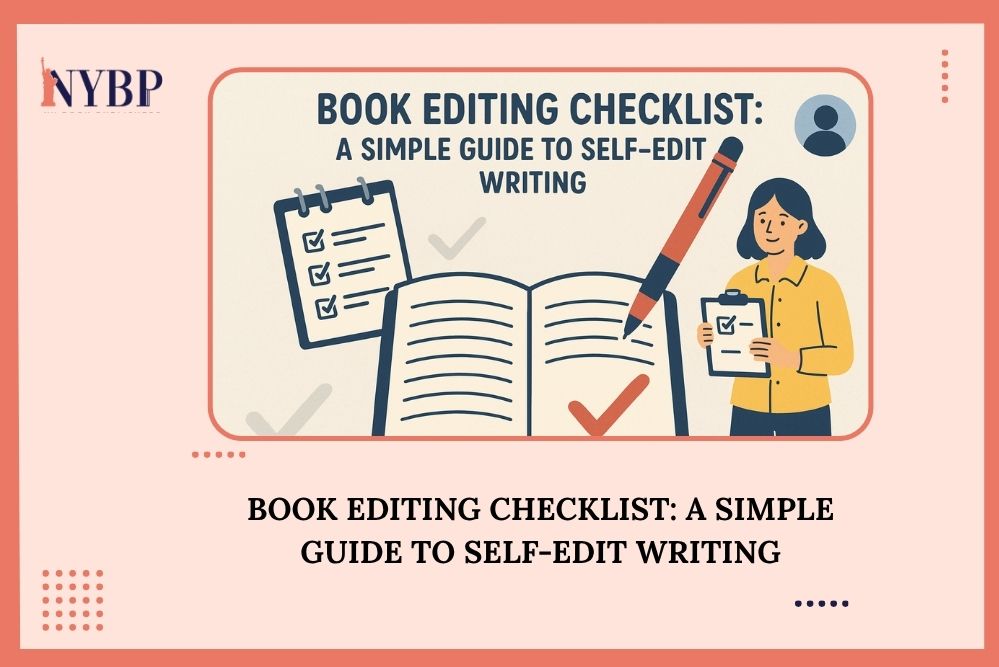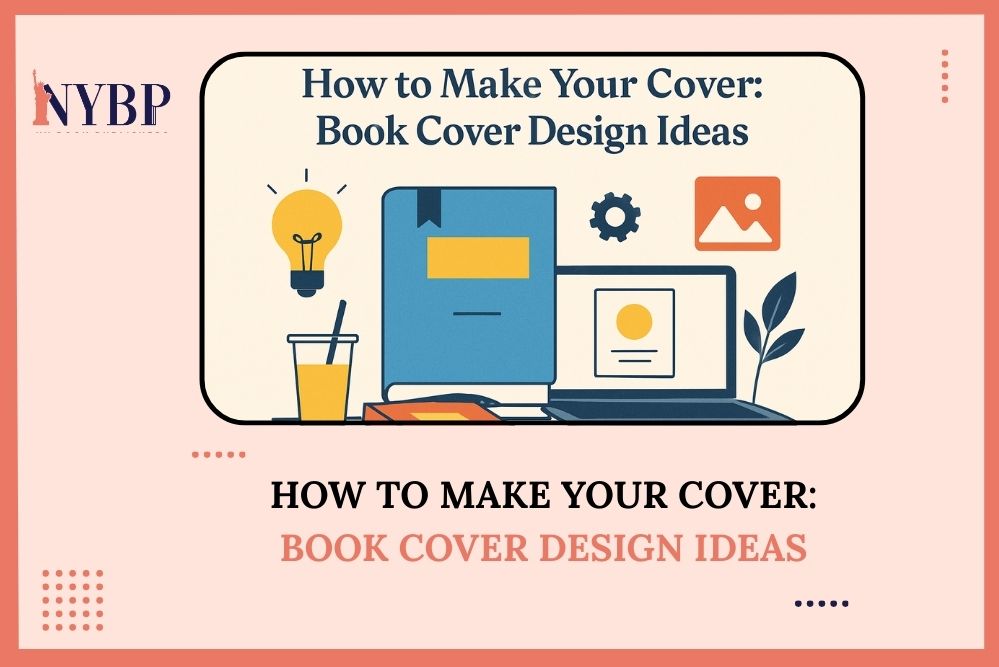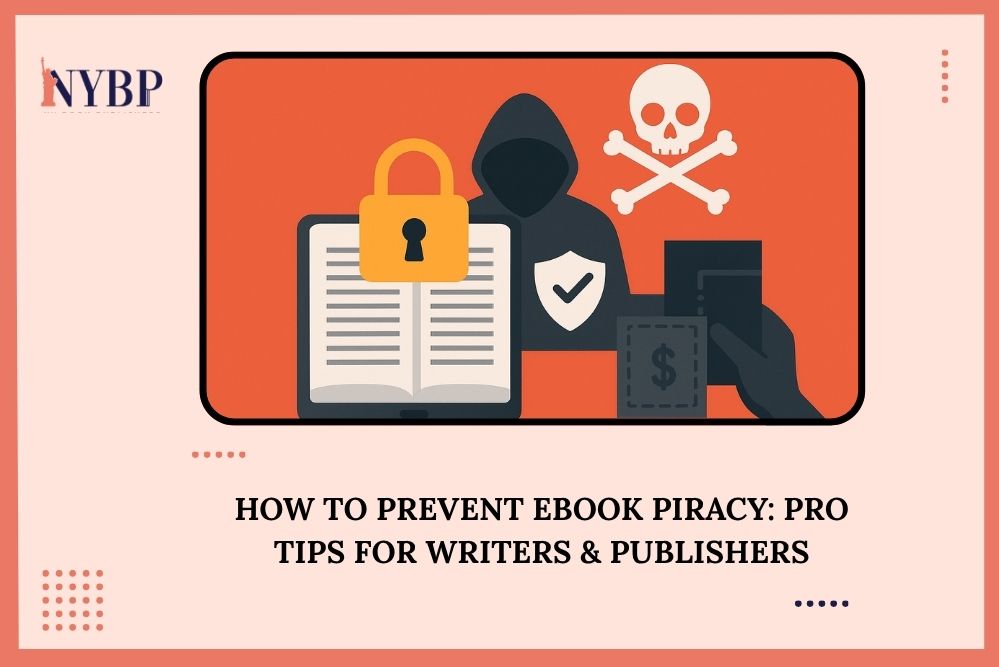Intro
Writing a book is exciting, but editing can feel overwhelming. That’s where a book editing checklist comes in handy. It’s your roadmap to clean, polished, and professional writing. With a clear checklist, you can spot mistakes faster, improve your story, and make your manuscript ready for readers.
Whether you’re a first-time author or a seasoned writer, this guide breaks down self-editing into manageable steps. You’ll learn what to check, how to revise, and how to make your book shine before sending it to a professional editor. Let’s explore how a writing editing checklist can simplify the process and save you hours of frustration.
What Is A Book Editing Checklist?
A book editing checklist is more than just a list — it’s a roadmap that guides authors through the entire editing process. Writing a book is exciting, but editing can feel overwhelming. A checklist helps break down the process into manageable steps, ensuring that no part of your manuscript is overlooked. It allows you to systematically review your work, improve the story, and polish your writing before sharing it with readers or submitting it to a professional editor.
A comprehensive book editing checklist usually covers multiple layers of editing:
- Developmental editing: This is the big-picture stage. It focuses on the story’s structure, plot consistency, pacing, and character development. It ensures your story flows logically and that characters grow and evolve in a believable way.
- Line editing: Here, the focus is on clarity, sentence structure, tone, and word choice. Line editing refines your writing so each sentence reads smoothly and keeps readers engaged from start to finish.
- Proofreading: The final layer catches surface-level errors such as grammar, punctuation, spelling, and formatting issues. Proofreading ensures your manuscript looks professional and is free from distracting mistakes.
Using a book editing checklist turns what could be an overwhelming task into actionable, step-by-step work. It’s like having a personal guide that helps you refine every detail, so your book is polished, professional, and ready for publication.
Why Every Author Needs an Editing Checklist
Even the most experienced writers make mistakes. A self-editing checklist is a lifesaver because it keeps your manuscript on track and ensures nothing is overlooked. Here’s why every author should use one:
- Catch overlooked errors: Small typos, plot holes, or inconsistencies in character behavior can easily slip through. A checklist ensures you catch these before your book reaches readers.
- Improve storytelling: By reviewing your manuscript step by step, you can refine pacing, strengthen character development, and make sure your story flows naturally.
- Save time: Instead of revising endlessly without direction, a checklist provides a clear path. You know exactly what to focus on, which streamlines the editing process.
- Prepare for publishing: A polished manuscript impresses editors, beta readers, literary agents, and even potential publishers. It shows professionalism and commitment.
Think of a book editing checklist as your personal roadmap to success. It transforms a chaotic editing process into manageable steps, helping you confidently move toward publication.
Developmental Editing Checklist
Before you refine sentences or correct grammar, ensure your story works as a whole. Developmental editing focuses on the big picture. Here’s what to check:
- Plot structure: Does your story have a clear beginning, middle, and end? Are major events logically connected and satisfying?
- Pacing: Are some sections dragging while others feel rushed? Balance is key to keep readers engaged throughout the book.
- Character arcs: Do your characters grow, change, or evolve naturally? Are their motivations clear and believable?
- Conflict and resolution: Is there enough tension to hold the reader’s interest? Are conflicts resolved in a satisfying way?
- Consistency: Are timelines accurate, settings believable, and character details consistent? Inconsistencies can pull readers out of the story.
Developmental editing ensures your manuscript has a strong foundation. Fixing these core issues early prevents bigger headaches later during line editing and proofreading.
Line Editing and Style Checklist
Once the story structure is solid, focus on the language itself. Line editing polishes sentences, improves readability, and enhances your book’s overall style. Key areas include:
- Sentence clarity: Are your sentences easy to read and understand? Avoid overly long or confusing constructions.
- Word choice: Are the words precise, impactful, and appropriate for your genre? Replace weak or repetitive words with stronger alternatives.
- Tone and voice: Does your narrative style remain consistent? Are characters’ voices distinct and believable?
- Dialogue: Does the dialogue sound natural? Does it reveal personality, advance the story, and feel authentic?
- Repetition: Remove repeated words, phrases, or ideas that distract readers or make the text feel redundant.
Good line editing turns a good manuscript into a memorable reading experience. It ensures your voice shines and your story resonates with readers.
Proofreading Checklist
After polishing content and style, proofreading focuses on surface-level issues. This final step ensures your book looks professional and is free of errors:
- Grammar: Check for subject-verb agreement, proper punctuation, correct spelling, and sentence structure.
- Formatting: Make sure font, spacing, headings, and paragraph alignment are consistent throughout.
- Numbers and dates: Verify that all statistics, references, and factual details are accurate.
- Page layout: Check chapter breaks, page numbers, margins, and headings for consistency and readability.
- Minor typos: Read slowly, ideally aloud, or use tools like Grammarly to catch small errors missed during earlier edits.
Proofreading gives your manuscript the final shine. It ensures readers can focus on your story without being distracted by technical mistakes.
Peer Editing Checklist
Getting feedback from others is invaluable. Peer editing adds fresh perspectives and helps you see your manuscript through a reader’s eyes. Here’s what to guide them on:
- Story clarity: Did readers understand the plot and follow events easily?
- Engagement: Which sections felt slow, confusing, or dull? Where did their interest peak or fade?
- Character connection: Were characters relatable and believable? Did readers care about them?
- Emotional impact: Did your story evoke the feelings you intended? Did moments resonate emotionally?
- Overall impressions: Would readers recommend the book to others? Do they feel satisfied with the ending?
Peer editing provides critical insight. It highlights areas you may have missed and ensures your manuscript connects with your audience.
Tips for Using Your Book Editing Checklist
Using a book editing checklist effectively can make the editing process smoother and less overwhelming. Here’s how to get the most out of it:
- Edit in stages: Don’t try to tackle everything at once. Focus on one type of edit at a time—first developmental issues, then line editing, followed by proofreading. Breaking it into stages prevents burnout and ensures each aspect gets proper attention.
- Take breaks: Step away from your manuscript regularly. Distance gives you fresh eyes and improves objectivity. After a break, errors, inconsistencies, or awkward phrasing become much easier to spot.
- Print your checklist: A physical checklist can help you track progress visually. Checking off items provides a sense of accomplishment and ensures nothing gets overlooked.
- Use tools wisely: Editing software like Grammarly, ProWritingAid, or Hemingway can save time and catch technical mistakes. However, don’t rely on them entirely. Human judgment is essential for style, tone, and story flow.
- Revise multiple times: Editing isn’t a one-step task. Each round refines your manuscript further. The first pass might focus on plot issues, the second on sentence clarity, and the last on grammar and formatting.
A systematic approach using your checklist reduces overwhelm, boosts confidence, and results in a polished, professional book that’s ready for readers. Treat your checklist as a roadmap—it guides every step from rough draft to finished manuscript.
Bonus Tips: How to Edit Your Book Like a Pro
Editing a manuscript can feel overwhelming, but approaching it strategically will make your book sharper, cleaner, and more engaging. These bonus tips will help you edit like a professional author.
-
Take a Break Before Editing
After finishing your first draft, step away from it for a few days or even weeks. This break helps you return with fresh eyes, making it easier to spot inconsistencies, plot holes, or awkward phrasing. Distance creates objectivity, which is crucial for effective self-editing.
-
Read Your Manuscript Aloud
Reading your text aloud highlights sentence flow, rhythm, and dialogue authenticity. It’s easier to notice repeated words, clunky sentences, and pacing issues when you hear them rather than just seeing them. Consider using text-to-speech software for a different perspective.
-
Edit in Layers
Tackle your manuscript in separate stages. Start with developmental editing — focus on plot, character arcs, pacing, and structure. Next, move to line editing, which improves sentence clarity, tone, and word choice. Finally, perform proofreading to correct grammar, punctuation, and formatting. This step-by-step approach prevents overwhelm and ensures nothing gets missed.
-
Leverage Editing Tools Wisely
Grammar and style tools like Grammarly, ProWritingAid, or Hemingway App can save time, highlight errors, and suggest improvements. However, don’t rely solely on these tools — they can’t replace your voice or judgment. Use them as a guide rather than a final authority.
-
Print Your Manuscript
Physical copies make it easier to spot typos, formatting issues, and structural problems. Highlight passages, add margin notes, and track changes. This tactile approach often reveals issues that reading on a screen can hide.
-
Maintain a Style Sheet
Create a dedicated document listing character names, locations, key dates, and recurring details. This ensures consistency across chapters, avoids confusion, and helps maintain continuity throughout the book.
-
Cut Unnecessary Words
Be ruthless about removing filler phrases, repetitive sentences, and overly long descriptions. Every word should serve the story. Concise writing improves readability and keeps readers engaged.
-
Seek Feedback
Beta readers and trusted peers provide fresh perspectives. They can identify plot holes, confusing sections, or areas where the pacing drags. A peer editing checklist can guide them to give structured, useful feedback.
-
Don’t Rush the Process
Editing takes time. Revisions are often iterative, multiple passes are necessary to refine the manuscript fully. Schedule dedicated sessions and treat each editing stage as a focused project.
-
Hire a Professional Editor if Needed
Even experienced authors hire professional editors. Developmental editors can strengthen the story, copy editors ensure clarity, and proofreaders polish your manuscript to perfection. Professional guidance can transform a good book into a great one.
How NY Book Publishers Can Transform Your Manuscript into a Bestseller
At NY Book Publishers, we understand that editing a book can feel overwhelming and time-consuming. That’s why we step in to save authors from all the hassle. Our professional team starts with a thorough manuscript review, offering developmental editing to strengthen your plot, characters, and story structure. We then provide detailed line editing and proofreading to catch grammar mistakes, spelling errors, and formatting issues. By focusing on every layer of editing, we ensure your manuscript is polished, clear, and engaging. Our goal is to help authors feel confident that their book is ready for readers.
Beyond editing, NY Book Publishers offers comprehensive support to bring your book to life. We handle book design and cover creation, ensuring your work looks professional and visually appealing. Our publishing guidance helps you navigate print and digital platforms with ease. On top of that, we provide marketing assistance to promote your book, reach your target audience, and boost sales. With NY Book Publishers, authors get more than just editing — they get full support from draft to publication, turning their manuscript into a successful, market-ready book.
Your Path to a Polished and Publish-Ready Book
Editing a book may seem challenging, but a book editing checklist makes the process manageable. From developmental edits to proofreading, following a step-by-step guide ensures your manuscript is polished and professional. Use a checklist, get feedback, and rely on experts when needed. A clear plan saves time, improves quality, and helps your book succeed. Or contact us, NY Book Publishers, and our experts will make your writing journey smooth, guided, and stress-free.
FAQs
-
What is an editing checklist?
It is a list of tasks to review and improve a manuscript, ensuring no mistakes are missed.
-
What should be included in a checklist?
Check story structure, characters, pacing, dialogue, grammar, formatting, and overall readability.
-
What should be checked during the editing process?
Developmental edits, line edits, proofreading, and peer feedback are key areas.
How to make a detailed checklist?
Break editing into stages: developmental, line, proofreading, and peer review. Include specific points for each.
-
What are the six steps of the basic checklist?
Here are the basic 6 steps that are the most important
- Story structure
- Character development
- Pacing and flow
- Dialogue and tone
- Grammar and spelling
- Formatting and presentation





